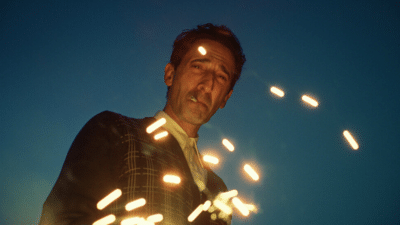
The use of artificial intelligence in movies has sparked debate, especially after the Oscar-nominated film The Brutalist made headlines for incorporating AI technology. However, it is not the only contender using AI. Other high-profile films, including A Complete Unknown, Dune: Part Two, and Emilia Pérez, have also used AI in various ways. Due to the growing reliance on AI, the Motion Picture Academy is considering making it mandatory for filmmakers to disclose when AI is used, according to Variety.
Currently, the Academy offers an optional AI disclosure form, but its Governors and executive committees are now discussing a rule change that would require AI disclosure starting with the 2026 Oscars. The Academy's Scientific and Technical Council is working on drafting specific language for the new rule.
AI has been a part of visual effects for years, but its increasing role in film production has drawn more scrutiny. The Visual Effects Society (VES) Awards this year include several nominees in the emerging technology category that rely on AI. One such nominee, Australia-based Rising Sun Pictures , developed a machine learning toolset called Revize, used for face replacements, de-aging, and other digital modifications.
Rising Sun's toolset was employed in several films, including A Complete Unknown and Deadpool & Wolverine, but specific details about its use remain limited. A spokesperson for Searchlight Pictures clarified that in A Complete Unknown, AI was used in just three wide shots to make stunt performers resemble the lead actor while riding a motorcycle, without altering performances or creative aspects.
Similarly, Furiosa: A Mad Max Saga used AI-based tools in about 150 shots to transition the character Furiosa from a child (played by Alyla Browne) to an adult (played by Anya Taylor-Joy). According to Robert Beveridge, a machine learning supervisor at Rising Sun, the technology allowed artists to control the transformation process with precision.
Metaphysic, another AI-driven company, was used to digitally age and de-age actors Tom Hanks and Robin Wright in Here, a film by Robert Zemeckis. The technology also helped recreate the likeness of the late Richard Carter for Furiosa and Ian Holm for Alien: Romulus.
In Dune: Part Two, AI was integrated into the VFX process through a feature called CopyCat, which was used to replicate the blue eye color of the Fremen characters, saving extensive manual work.
The Brutalist attracted particular attention when it was revealed that AI technology called Respeecher was used to refine Hungarian dialogue. Director Brady Corbet clarified that the AI was used only to adjust certain vowel and letter pronunciations, and not to alter any English-language performances by lead actors Adrien Brody and Felicity Jones.
Meanwhile, Emilia Pérez also acknowledged the use of Respeecher in its credits, and another AI tool, AudioShake, was used to isolate opera singer Maria Callas’ voice for the biopic Maria.
With AI becoming more common in filmmaking, concerns have emerged over transparency and artistic integrity. A veteran member of the Academy’s VFX branch, speaking anonymously, stated that the industry should prioritize honesty, ensuring that award decisions are based on human artistry. The source emphasized that new tools can push creative boundaries but should always support storytelling rather than replace human input.
Ultimately, the ongoing discussions at the Academy suggest that AI’s role in cinema is evolving rapidly. As collaboration remains central to filmmaking, the industry must find a balance between technological innovation and artistic authenticity.
